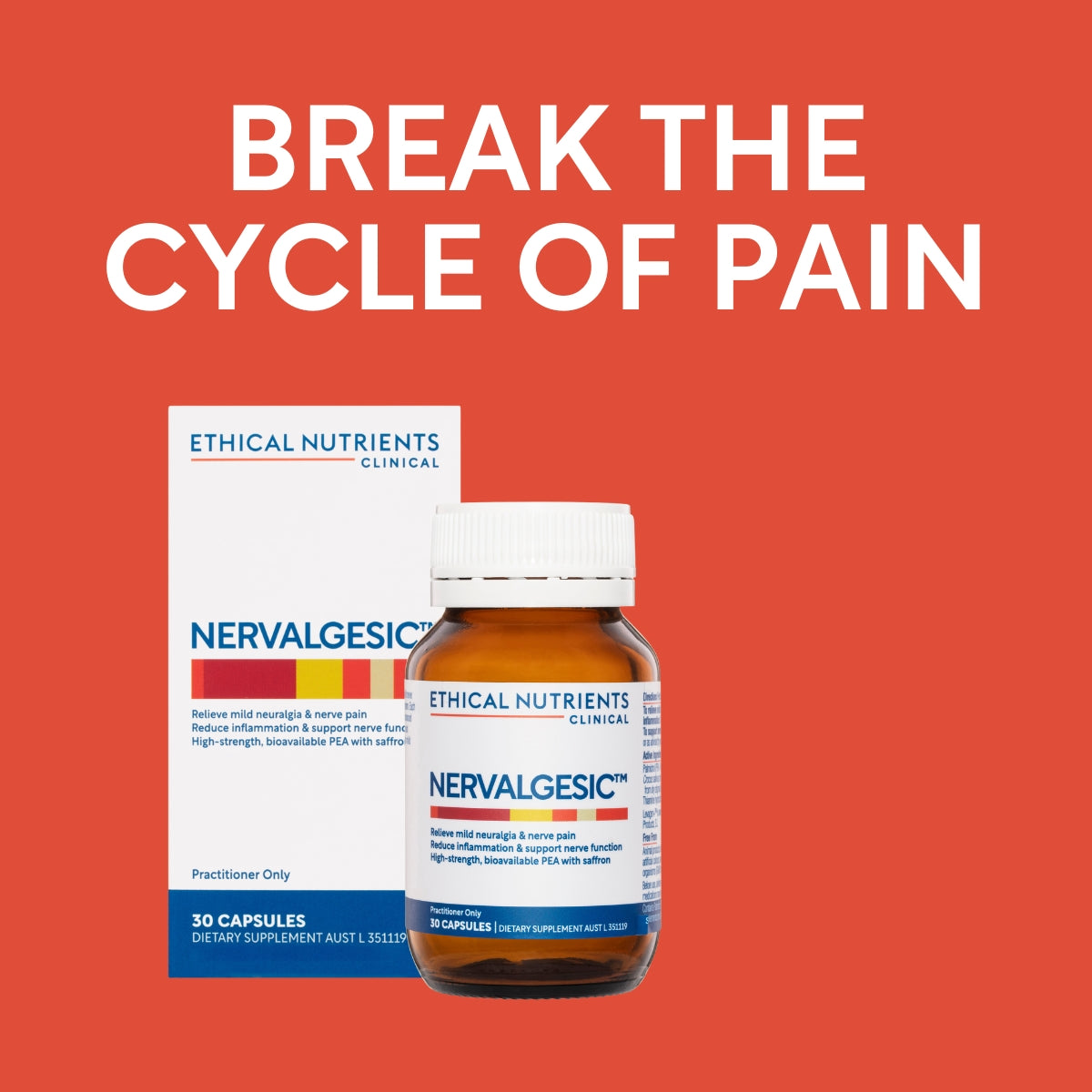Supporting Healthy Growth & Development
Parents are routinely told that their little ones need plenty of calcium and iron–but magnesium hasn’t received anywhere near as much attention, despite being essential for children's healthy growth and development.
Magnesium is the fourth most abundant mineral in the human body and is crucial for our health from an early age. [1] It's essential for bone development, regulating mood, energy production and muscle relaxation. [2][3][4]
With declining levels of magnesium in our foods1], studies indicate that a significant number of Australians fail to meet the recommended daily intake of this powerful mineral. [5] Our kids can be the fussiest of eaters, particularly in the earlier years, so there’s a good chance that dietary intake might not be meeting their growing demands.
Bone Development in the Early Years
You've heard that calcium is essential for healthy bones, but magnesium might be just as important–it's needed for calcium absorption and metabolism, converting vitamin D into its active form and regulating hormones for bone growth and development. [1][3]
In fact, results from a 2013 study showed that the amounts of magnesium consumed and absorbed by the body were a key predictor of a child’s bone health. [7] Optimal magnesium levels are particularly important for children because the best time to influence bone mass is in the early years, before adolescence when peak bone mass is achieved. [6]
Magnesium for Calm and Happy Kids
Low levels of magnesium can contribute to childhood agitation, irritability and attention difficulties. [4] [8] Children that are under stress (physically or emotionally) may display more of the symptoms of magnesium deficiency, because the body requires magnesium to deal with the stress response. [1] Boosting magnesium levels could help to prevent and manage these challenges that are common in kids–a 2015 study that adolescents who had a higher intake of magnesium showed reduced “externalising behaviour”, such as attention problems and aggression. [8]
Healthy neurological function and the release of mood-supporting neurotransmitters need plenty of magnesium [11] Perhaps most importantly, magnesium maintains levels of GABA, a neurotransmitter which has a calming effect, encourages relaxation and promotes sleep. [1] By supporting GABA levels, magnesium could help to keep kids calm, focussed, and happy.
Magnesium Supports Growth & Energy Production
Magnesium plays an important role in growth, development and energy production in children. It's essential for muscle strength, protein synthesis, enzymatic activity, cell growth, and regeneration. [13] [14]
Are your kids feeling flat? Low energy can be associated with insufficient magnesium. Most of the body’s energy comes from ATP, a molecule that converts energy from food into fuel for other processes in the body. Guess which mineral this process requires? You got it–our good friend magnesium. [11]
Magnesium can also help to ease growing pains during peak periods of growth. It is required for muscle contraction and relaxation, without it muscles can’t properly relax which can lead to cramps, weakness, and increased irritability of the nervous system. [11] [12]
Quick Tips
- Other sgns and symptoms of low magnesium include constipation, irritability, night time muscle cramps, difficulty sleeping, and teeth grinding [1] [10] [14]
- Get more magnesium into your child's diet by including lots of green leafy vegetables, figs, dates, whole grains, and nuts. [9][14]
- Daily recommended intake of magnesium for kids between 1-3 years is 8mg per day; 4-8 years is 130mg per day; and 9-13 years is 240mg per day.
References:
[1] Schwalfenberg, G., & Genuis, S. J. (2017). The Importance of Magnesium in Clinical Healthcare. Scientifica, 2017, 1-14. Retrieved from: https://www.ncbi.nlm.nih.gov/pmc/articles/PMC5637834/
[2] Hodges, R. E., & Minich, D. M. (2015). Modulation of Metabolic Detoxification Pathways Using Foods and Food-Derived Components: A Scientific Review with Clinical Application. Journal of nutrition and metabolism, 2015, 760689. Retrieved from: https://www.ncbi.nlm.nih.gov/pmc/articles/PMC4488002/
[3] Abenavoli, L., Izzo, A. A., Milić, N., Cicala, C., Santini, A. & Capasso, R. (2018). Milk thistle (Silybum marianum): A concise overview on its chemistry, pharmacological, and nutraceutical uses in liver diseases. Phytotherapy Research. 2018;32(11):2202–2213. Retrieved from: https://www.ncbi.nlm.nih.gov/pubmed/30080294
[4] Loguercio, C. & Festi, D. (2011). Silybin and the liver: From basic research to clinical practice. World Journal of Gastroenterology, 17(18), 2288– 2301. Retrieved from: https://www.ncbi.nlm.nih.gov/pmc/articles/PMC3098397/
[5] Farzaei, M. H., Zobeiri, M., Parvizi, F., El-Senduny, F. F., Marmouzi, I., Coy-Barrera, E., … Abdollahi, M. (2018). Curcumin in Liver Diseases: A Systematic Review of the Cellular Mechanisms of Oxidative Stress and Clinical Perspective. Nutrients, 10(7), 855. Retrieved from: https://www.ncbi.nlm.nih.gov/pmc/articles/PMC6073929/#__ffn_sectitle
[6] Szopa, A., Ekiert, R., & Ekiert, H. (2017). Current knowledge of Schisandra chinensis (Turcz.) Baill. (Chinese magnolia vine) as a medicinal plant species: a review on the bioactive components, pharmacological properties, analytical and biotechnological studies. Phytochemistry reviews : proceedings of the Phytochemical Society of Europe, 16(2), 195–218. Retrieved from: https://pubmed.ncbi.nlm.nih.gov/28424569/"
[7] Sotelo-Félix, J., Martinez-Fong, D., Murie,l P., Santillán, R. L., Castillo, D. & Yahuaca, P. (2002). Evaluation of the effectiveness of Rosmarinus officinalis (Lamiaceae) in the alleviation of carbon tetrachloride-induced acute hepatotoxicity in the rat. Journal of Ethnopharmacology, 81(2), Pages 145-154. Retrieved from: https://www.ncbi.nlm.nih.gov/pubmed/12065145
[8] Mahamid, M., Mahroum, N., Bragazzi, N. L., Shalaata, K., Yavne, Y., Adawi, M., et al. (2018). Folate and B12 Levels Correlate with Histological Severity in NASH Patients. Nutrients, 10(4), Retireved from:
[9] Heidari, R., Jamshidzadeh, A., Niknahad, H., Mardani, E., Ommati, M. M., Azarpira, N., Najibi, A. (2016). Effect of taurine on chronic and acute liver injury: Focus on blood and brain ammonia. Toxicology Reports, 3, 870–879. Retrieved from: https://www.ncbi.nlm.nih.gov/pmc/articles/PMC5615919/
[10] Hu, Y.H.,1 Lin, C.L,, Huang, Y. W., Liu, P. E. & Hwang, D. F. (2008). Dietary amino acid taurine ameliorates liver injury in chronic hepatitis patients. Amino Acids, 35(2):469-73. Retrieved from: https://www.ncbi.nlm.nih.gov/pubmed/17690950
[11] Cheng, C-H., Wang, N. & Feng, Y. (2019). Selenium in the Prevention and Treatment of Hepatocellular Carcinoma: From Biomedical Investigation to Clinical Application [Online First], IntechOpen. Retrieved from: https://www.intechopen.com/online-first/selenium-in-the-prevention-and-treatment-of-hepatocellular-carcinoma-from-biomedical-investigation-t
[12] Guan, Y.-S., & He, Q. (2015). Plants consumption and liver health. Evidence-based Complementary and Alternative Medicine, 2015. Retrieved from: https://www.ncbi.nlm.nih.gov/pmc/articles/PMC4499388/






